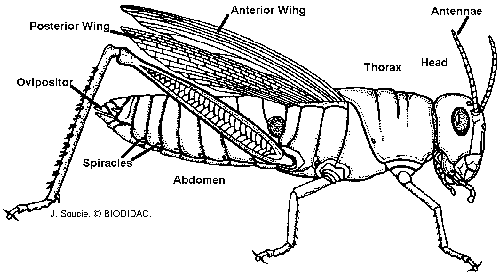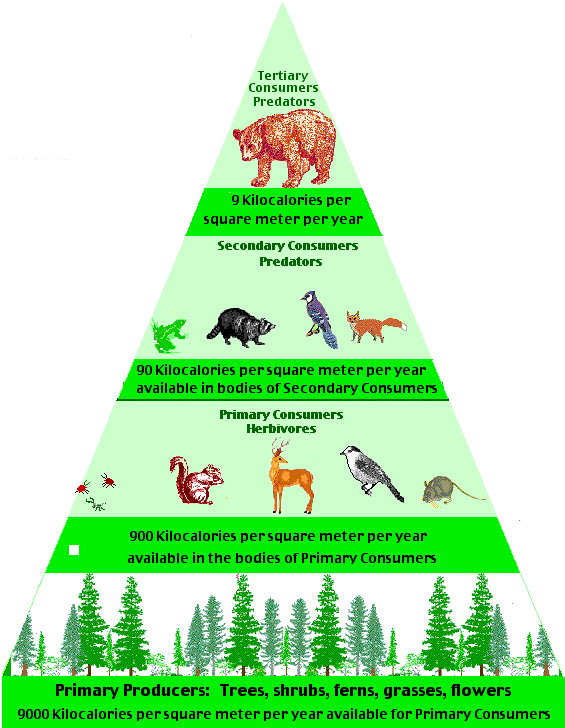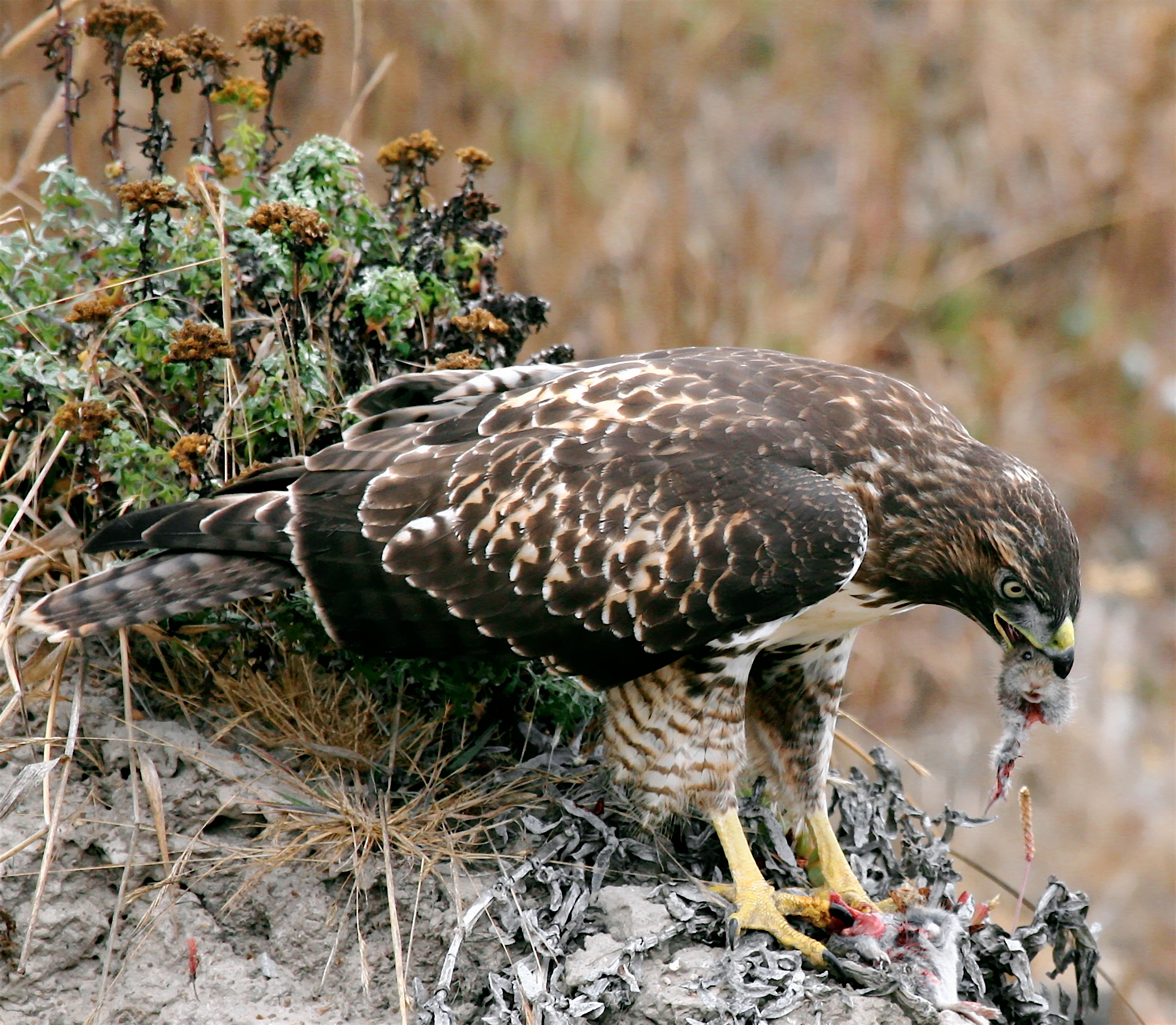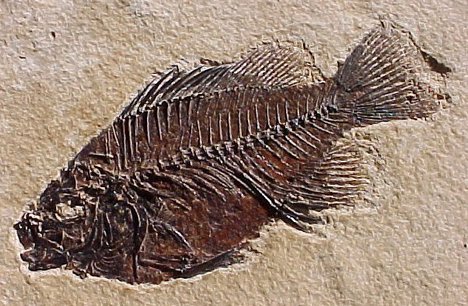Monday, May 30, 2011
Semester 2: Blog # 16
This year in biology was really memorable and I got to say I failed on the dissection because it was difficult for me to take out the external organs from the specimens. Also I wasn't really good at quizzes, even the online ones because I fail at remebering the information. As for my successes I'm pretty organized with the notebook and I'm good at taking notes. The dissections I have done with my partners, that I will never forget because it was fun and interesting how the organs look like in them and also the field trip at the Aquarium of the Pacific was most memorable of all since I get to spend time with the class and experienced lots of things in the train and Aquarium.
Semester 2: Blog # 15
 Crayfish and grasshopper both have antennae, compound eye, anus, stomach, and esophagus. Both of these specimens have the basic organs for them to live basically. Although the big difference is that the grasshopper has an anterior wing and the crayfish doesn't. So crayfish is mostly in the seas and grasshoppers are usually around a field or anywhere in the streets. For crayfish they have a tail or telson so they could swim in the oceans. The grasshoppers have oviposters and the crayfish has a sperm duct. So they have different ways of mating and make offsprings.
Crayfish and grasshopper both have antennae, compound eye, anus, stomach, and esophagus. Both of these specimens have the basic organs for them to live basically. Although the big difference is that the grasshopper has an anterior wing and the crayfish doesn't. So crayfish is mostly in the seas and grasshoppers are usually around a field or anywhere in the streets. For crayfish they have a tail or telson so they could swim in the oceans. The grasshoppers have oviposters and the crayfish has a sperm duct. So they have different ways of mating and make offsprings. Semester 2: Blog # 14
 I would have to say that the grasshopper resembles the most to humans, but theres some that doesn't resmeble with the humans like the antenna, wing, etc. The reason why I think they are most like the humans is because they have eyes, ovary, anus, oviposter, stomach, and esophagus. Just like humans, male and females are different for the grasshoppers. Female has eggs and an open oviposter or penis and as for male they don't have eggs and their oviposter or anus is closed.
I would have to say that the grasshopper resembles the most to humans, but theres some that doesn't resmeble with the humans like the antenna, wing, etc. The reason why I think they are most like the humans is because they have eyes, ovary, anus, oviposter, stomach, and esophagus. Just like humans, male and females are different for the grasshoppers. Female has eggs and an open oviposter or penis and as for male they don't have eggs and their oviposter or anus is closed. Semester 2: Blog: #13
The organs were all different looking from the past dissections I have done so far. Though the most interesting dissection I witnessed is the squid because they don't have a skeleton except for the pen. The ink sank and lens of the squid interested me the most. The pen felt like plastic when you touch it. Basically from all the dissections I did this week it helps me understand how the animals survive or live in the Earth.
Semester 2: Blog # 12
The organs in the worm dissection surprised me because it was a lot different from other's like humans and other animals. The heart of a worm surprised me because it doesn't look like a heart its thin and looks like intestines. So it was surprising how an earthworm has no skeleton so it has a weak body. The organs surprised me the most due to its size and looks. Also the there was a lot of dirt in it's body.
Monday, May 2, 2011
Semester 2 : Blog # 11
The alternation of generations is a life cycle of how plants reproduce sexually. It takes plants through both haploid and diploid generations. The sporophyte is a multicellular diploid plant structure which produces spores through meiotic (asexual) division. The multicellular haploid plant structure is called the gametophyte, which is formed from the spore and give rise to the haploid gametes. A mature sporophyte produces spores by meiosis. Spores germinate and grow into a gametophyte. At maturity, the gametophyte produces gametes by mitosis. Two gametes fuse to produce a zygote, which develops into a diploid sporophyte.
Sunday, May 1, 2011
Semester 2 : Blog # 10
Monday, April 11, 2011
Semester 2 : Blog # 9
Competition Interaction is a contest between individual species, groups, etc. territory, food, and location for resources. There's either groups that compete with another group for one goal which cannot be shared. Competition occurs when there is living organisms that lives in the same environment. Animals compete for food, water, shelter, etc. It's the same for humans.
In commensal interactions, one species benefits and the other is unaffected. The commensal organism may depend on its host for food, shelter, support, transport, or a combination of these.
Mutualism is an interaction between two or more species, where species derive a mutual benefit. One or both species involved in the interaction may be obligate, meaning they cannot survive in the short or long term without the other species. Examples include cleaner fish, pollination and seed dispersal.
Predation describes an interaction where a predator consumes on its prey. Predators may or may not kill their prey prior to feeding on them, but the act of predation always results in the death of its prey and the eventual absorption of the prey's tissue through consumption. Other categories of consumption are herbivory which means eating parts of plant and detritivory, the consumption of dead organic material. For example, parasitic species prey on a host organism and then lay their eggs on it for their offspring to feed on it while it continues to live or on its decaying corpse after it has died.
Parasitism is the relationship between organisms of different species where one organism, the parasite, benefits at the expense of the other, the host. Traditionally parasite referred to organisms with life stages that went beyond one host , which are now called macroparasites. Parasites can now also refer to microparasites, which are smaller, such as viruses bacteria can be directly transmitted between hosts of one species. Unlike predators, parasites are generally much smaller than their host. Parasite show a high degree of specialization for their mode of life, and reproduce at a faster rate than their hosts. Examples of parasitism include interactions between vertebrate hosts and diverse animals such as tapeworms, flukes, the Plasmodium species, and fleas. Parasitism is differentiated from parasitoidism, a relationship in which the host is normally killed by the parasite and which occurs in some species of moth, butterfly, ant, fly and other insects.
In commensal interactions, one species benefits and the other is unaffected. The commensal organism may depend on its host for food, shelter, support, transport, or a combination of these.
Mutualism is an interaction between two or more species, where species derive a mutual benefit. One or both species involved in the interaction may be obligate, meaning they cannot survive in the short or long term without the other species. Examples include cleaner fish, pollination and seed dispersal.
Predation describes an interaction where a predator consumes on its prey. Predators may or may not kill their prey prior to feeding on them, but the act of predation always results in the death of its prey and the eventual absorption of the prey's tissue through consumption. Other categories of consumption are herbivory which means eating parts of plant and detritivory, the consumption of dead organic material. For example, parasitic species prey on a host organism and then lay their eggs on it for their offspring to feed on it while it continues to live or on its decaying corpse after it has died.
Parasitism is the relationship between organisms of different species where one organism, the parasite, benefits at the expense of the other, the host. Traditionally parasite referred to organisms with life stages that went beyond one host , which are now called macroparasites. Parasites can now also refer to microparasites, which are smaller, such as viruses bacteria can be directly transmitted between hosts of one species. Unlike predators, parasites are generally much smaller than their host. Parasite show a high degree of specialization for their mode of life, and reproduce at a faster rate than their hosts. Examples of parasitism include interactions between vertebrate hosts and diverse animals such as tapeworms, flukes, the Plasmodium species, and fleas. Parasitism is differentiated from parasitoidism, a relationship in which the host is normally killed by the parasite and which occurs in some species of moth, butterfly, ant, fly and other insects.
Semester 2 : Blog # 6 (Redo)

Primary Producers are the most important in the food pyramid. The reason why these are the most important is because it provides food for the rest of the consumers which are primary, secondary, and territory. Without the primary producers we humans won't even exist since they use the process of photosynthesis. Primary producers provides the humans and other consumers food. So they are really important for us.
Sunday, April 3, 2011
Semester 2: Blog # 8
I have learned how the Earth and the universe on how it was formed and it was from a Big Bang which then suddenly out there it exploded and spitted out planets and stars, giving birth to life. Earth was also created by Planetary Accretion and Radioactivity. Planetary Accretion is, the breaking of nuclei shooting off to high speed, hitting other nuclei and making them hot and all the smaller particles. Radioactive decay releases heat, keeping the Earth's core hot, which then causes continental drifts. Radioactivity may also be the cause on how the Earth release the gases which made the 1st atmosphere. So the Earth is billions of years old and many scientist are interested in the past Earth, extinction, organisms, and species.
Friday, April 1, 2011
Semester 2: Blog #7


Tundras are the coldest of all the biomes, tundras have frost-molded landscapes, extremely low temperatures, little precipitation, poor nutrients, and short growing seasons. Tundras don't have trees, they're just mainly a landscape. As for tropical rain forests they are the home to more worldwide species than all other biomes added together. Rainforests has high on rainfall, which is often results in poor soils due to leaching of soluble nutrients. Rainforest is humid, and has tall, broad-leaved evergreen trees, which is the dominant plants, forming a leafy canopy over the forest floor. The temperature ranges from 21°C to 45°C and 125 to 660 cm of rainfall yearly.
Friday, March 11, 2011
Semester 2 : Blog # 6
Sunday, March 6, 2011
Semester 2: Blog # 5
 I think the humans are impacting anothor extinction, the reason why I think this is becuase humans have been over populating the area, polluting the oceans, ruining many habitats for species, and killing animals for eating. Also eversince cars has been invented they have been polluting the airs and making the ozone layer decrease even more. So if the humans keep doing this to the Earth to the extreme, before you know it all the animals would disapear and the habitats like the forest would be gone which means the trees would decrease and the oxygen we need will affect us. Humans needs animals and oxygen in order to suvive. So without the essentials in life theres no way we can live including the animals.
I think the humans are impacting anothor extinction, the reason why I think this is becuase humans have been over populating the area, polluting the oceans, ruining many habitats for species, and killing animals for eating. Also eversince cars has been invented they have been polluting the airs and making the ozone layer decrease even more. So if the humans keep doing this to the Earth to the extreme, before you know it all the animals would disapear and the habitats like the forest would be gone which means the trees would decrease and the oxygen we need will affect us. Humans needs animals and oxygen in order to suvive. So without the essentials in life theres no way we can live including the animals. 
Semester 2: Blog # 4
- Stabilizing selection favors the normal, the common, average traits in a population. Stabilizing Selection occurs when selection favors the intermediate trait value over the extreme values. Populations under this type of selection typically experience a decrease in the amount of additive genetic variation for the trait under selection. An example would be human birth, babies cnanot be born with really low weight or really heavy weight because it will lead to infant mortality. So thats why our bodies perfer medium weight.
- Directional selection is when natural selection favors a single phenotype. It occurs when there is a shift in population towards an extreme version of a beneficial trait. An example for this selection would be A useful example can be found in the breeding of the greyhound dog. Early breeders were interested in dog with the greatest speed. They carefully selected from a group of hounds those who ran the fastest. From their offspring, the greyhound breeders again selected those dogs who ran the fastest. By continuing this selection for those dogs who ran faster than most of the hound dog population, they gradually produced a dog who could run up to 40mph.
- Disruptive selection, also called diversifying selection, describes changes in population genetics in which extreme values for a trait are favored over intermediate values. In this case, the variance of the trait increases and the population is divided into two distinct groups. An example for this would be the population of rabbits. The color of the rabbits is governed by two incompletely dominant traits: black fur and white fur. If this population of rabbits were put into an area that had very dark black rocks as well as very white colored stone, the rabbits with black fur would be able to hide from predators amongst the black rocks and the white furred rabbits would be able to hide in the white rocks, but the gray furred rabbits would stand out in both of the habitats and would suffer greater predation. As a consequence of the selective pressures of their environment, our hypothetical rabbit population would be disruptively selected for extreme values of the fur color trait: white or black, but not gray.
Sunday, February 27, 2011
Semester 2 : Blog # 3
Microevolution is a change in gene frequency within a population. Though it does not create new species. This variation is due to 3 different processes which are mutations, natural selection, and genetic drift. Mutations are random changes in the composition or number of DNA molecules in a cell. Mutations occur due to inherent reasons, such as replication errors in DNA. Mutations are completely random and do not occur because they help an organism's ability to adapt to to its environment. Cases where mutations do help are rare, and such mutations are known as adaptations. Genetic drift occurs when a group of organisms within a population, happens to have a higher frequency of an allele than the surrounding organisms. Slowly the group starts to drift away from the gene pool of the main population by selectively mating within this group. In many ways, genetic drift is pretty much the same as nonrandom mating. Natural Selection determines the chances of survival for an organism and its reproductive capability. This process works with mutations to determine which organisms survive and pass their traits to their offspring.
Wednesday, February 16, 2011
Semester 2 : Blog # 2
The reason why the fossil record is hard to interpret is because since there are some small species that once lived on Earth and has been preserved and it would be difficult to observe and interpret on what it is. It might be either a part of a full fossil or sometimes it would be hard when the fossil is damaged and you couldn't find out what kind of species lay in those rocks. Also you have to dust it off in order to see the species clearly, so there might be dust that is hard to remove. Also it's hard to interpret the fossil when the species doesn't even have a skeleton. So basically if the fossil is either damage or the species have no skeleton, then it would be very difficult to interpret it.
Semester 2 : Blog # 1
 Theory is just another word for guest or a hunch, and thats what evolution is, just a hunch.The reason why evolution is a theory instead of a law is because evolution might not be proven true without the right evidence. Both theories and laws can turn out to be wrong, and must be tested by considering what evidence you should find if the theory or law were false. So since law means it has to be true then evolution is a theory because of the lack of evidence to prove it to be true. The world has many unknown things that we humans don't know, but its yet to be discovered.
Theory is just another word for guest or a hunch, and thats what evolution is, just a hunch.The reason why evolution is a theory instead of a law is because evolution might not be proven true without the right evidence. Both theories and laws can turn out to be wrong, and must be tested by considering what evidence you should find if the theory or law were false. So since law means it has to be true then evolution is a theory because of the lack of evidence to prove it to be true. The world has many unknown things that we humans don't know, but its yet to be discovered. Thursday, January 20, 2011
Blog #14
My favorite topic this year is genetics because I find it really interesting how you can use the punnet squares to figure out the possibility of an offspring, and how the traits are recessive or dominant. As for my least favorite it would be the Kreb Cycle, because I could never understand how the cycle goes, so its difficult for me to remeber. If there was one thing I could it would be making cancer cells harmless, because since cancer is dangerous and had made people die from it I want to make them harmless. To do that I would have to invent some kind of medicine that people could drink, if they have cancer, so they can get rid of this disease.
Blog #13
DNA helped make investigating crimes more faster, because DNA is the evidence on who did the crime. DNA evidence has helped identify who the suspect is in sexual violence or rape. The police use either fingerprints or blood from the person who was killed to get the DNA of the suspect, because when the criminal kills somebody that is close to them they usually use a knife and stab them, and when they did they either cut themselves. So it would be easy for investigators to find out who was the suspect by using the blood and match DNA in the criminal's database. Each person carried a genetic fingerprint in his or her DNA, so every person could be identified solely by the sequence of their base pairs. Instead, scientists are able to use a shorter method due to repeating patterns in the DNA. These patterns do not, however, give an individual "fingerprint," but they are able to determine whether two DNA samples are from the same person, related people, or non-related people. This is called DNA fingerprinting or profiling. So with DNA evidence it makes it alot more easier to find the suspect and without it, police would take long to figure out whos the suspect and perhaps might not even find the suspect and fail in criminal justice, since evidence is important for crimes.
Thursday, January 13, 2011
Blog #12
 In Gregor Mendel and his pea plant the P1 stands for parent generation, F1 stands for first filial (daughter) generation, and F2 stands for second filial (daughter) generation. So, for the Parent Cross, or the very first cross-breed Mendel did, which was between tall and short plants, the offspring were all Tt, each having a dominant allele and a recessive. Each F1 plant produces two types of gametes those with allele for tallness and shortness. So basically F1 inhearited P1's tallness, which is dominant, so all F1 plants are tall.
In Gregor Mendel and his pea plant the P1 stands for parent generation, F1 stands for first filial (daughter) generation, and F2 stands for second filial (daughter) generation. So, for the Parent Cross, or the very first cross-breed Mendel did, which was between tall and short plants, the offspring were all Tt, each having a dominant allele and a recessive. Each F1 plant produces two types of gametes those with allele for tallness and shortness. So basically F1 inhearited P1's tallness, which is dominant, so all F1 plants are tall.
Subscribe to:
Posts (Atom)


















